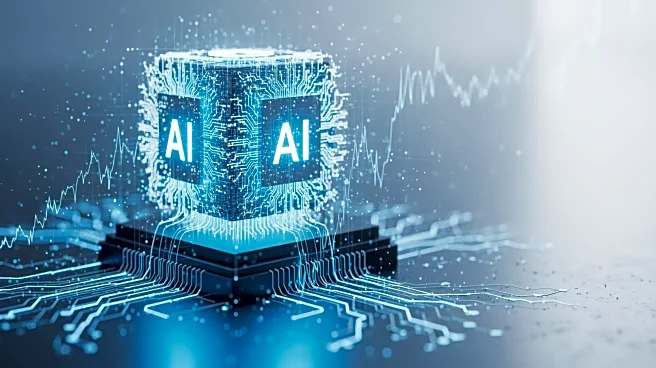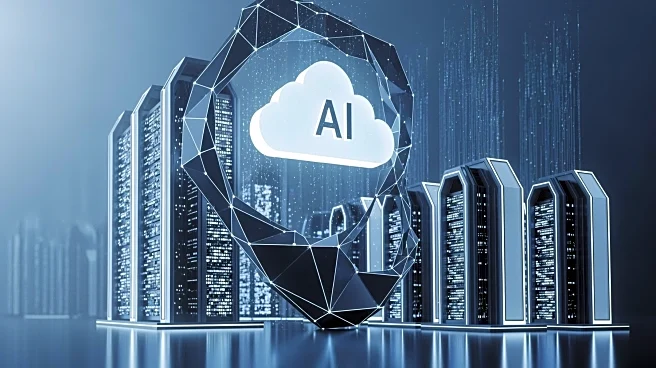What's Happening?
Bitcoin miners are increasingly turning to artificial intelligence (AI) and high-performance computing (HPC) initiatives to generate revenue amidst a challenging bear market. Seven of the top ten miners by
hashrate have reported AI or HPC projects that are already producing income, with others planning to follow suit. This shift allows miners to leverage their existing infrastructure, such as energized land and interconnections, to secure contracted revenue from GPU customers. The move is redefining mining economics, with companies like TeraWulf and Core Scientific expanding their AI hosting capabilities. TeraWulf has signed significant hosting agreements with Fluidstack, backed by Google, while Core Scientific has expanded its relationship with CoreWeave. The demand for data-center power is expected to rise, with U.S. data-center electricity consumption projected to reach 606 TWh by 2030, driven by AI workloads.
Why It's Important?
The integration of AI and HPC initiatives by Bitcoin miners is significant as it provides a diversified revenue stream, reducing reliance on traditional mining operations. This shift is crucial in the current bear market, where mining profitability is under pressure due to fluctuating Bitcoin prices and increasing operational costs. By securing long-term contracts with AI tenants, miners can achieve steadier cash flows, attracting equity investors seeking predictable returns. The growing demand for data-center power also highlights the importance of infrastructure development, with utilities adjusting their capital plans to accommodate this trend. This realignment could impact the future of mining operations, potentially slowing the expansion of network hashrate as more power is allocated to AI rather than ASICs.
What's Next?
As miners continue to explore AI and HPC opportunities, the focus will be on securing more contracted AI megawatts and optimizing revenue per megawatt. Utility capital expenditure plans and interconnection queue updates will play a crucial role in determining the pace at which new high-density halls can be energized. Additionally, any changes in Bitcoin fee regimes could influence the revenue gap between mining and AI hosting. Investors will closely monitor these developments, tracking contracted AI megawatts and dollars per megawatt per year in new filings. The international expansion of AI infrastructure, such as Marathon's partnership with Exaion, could further diversify revenue streams and enhance global capabilities.
Beyond the Headlines
The shift towards AI and HPC hosting by Bitcoin miners reflects broader trends in the tech industry, where data-center power demand is increasing due to the rise of AI workloads. This transition also highlights the evolving nature of mining operations, where traditional metrics like hashrate growth may no longer be the sole indicator of success. The focus on contracted revenue and infrastructure development could lead to new joint ventures between miners and utilities, offering capacity rights and priority interconnects. As the industry adapts to these changes, the composition of revenue will become a key factor in assessing miner performance and equity value.











